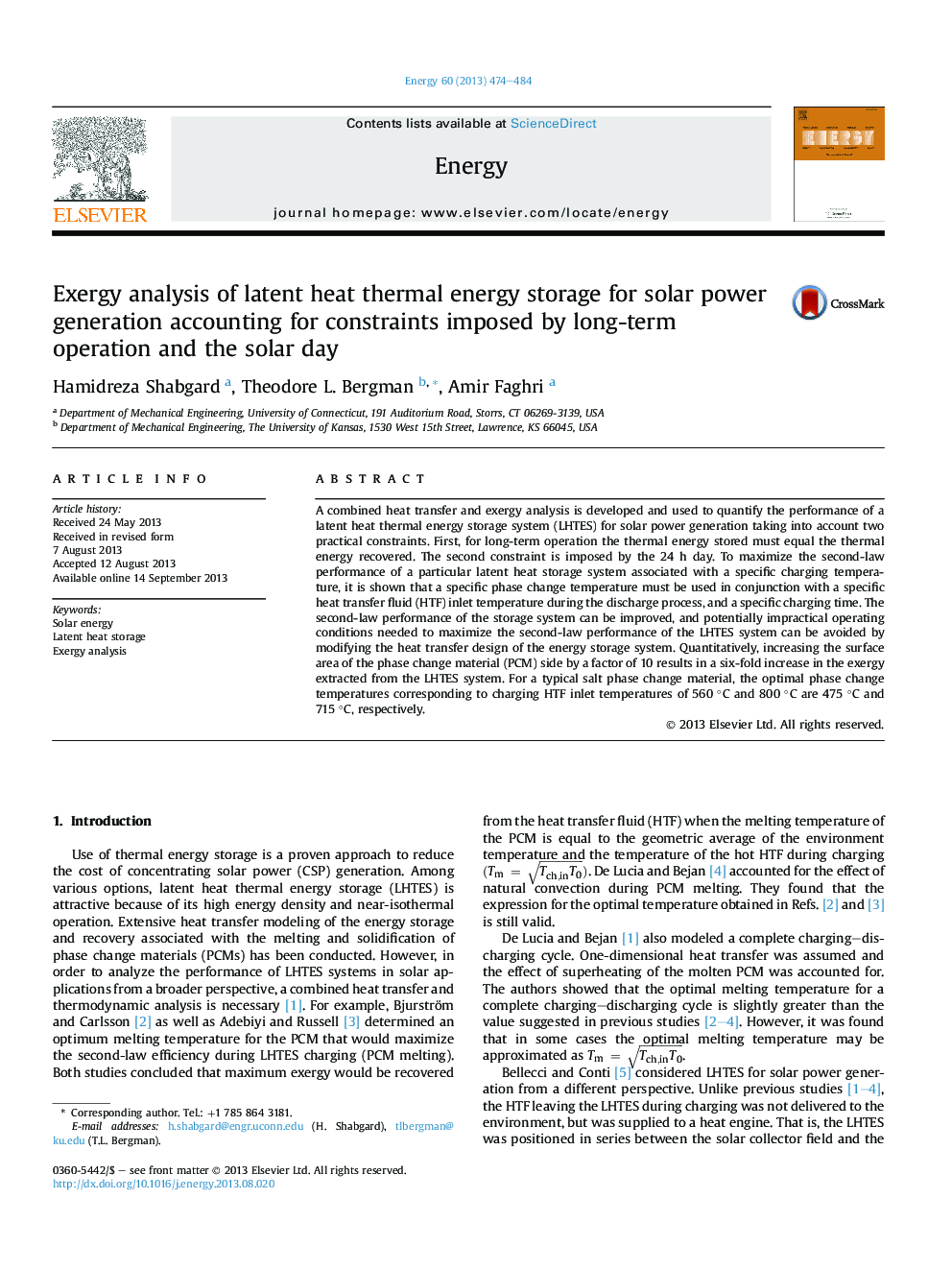| Article ID | Journal | Published Year | Pages | File Type |
|---|---|---|---|---|
| 1732648 | Energy | 2013 | 11 Pages |
•Exergy analysis of latent heat thermal energy storage systems is carried out.•Constraints imposed by long-term operation and the solar day are accounted for.•Maximum exergy recovery is identified as the second-law figure of merit.•Specific PCM and operating conditions are required to maximize the exergy recovery.•Heat transfer enhancement techniques improve exergy recovery.
A combined heat transfer and exergy analysis is developed and used to quantify the performance of a latent heat thermal energy storage system (LHTES) for solar power generation taking into account two practical constraints. First, for long-term operation the thermal energy stored must equal the thermal energy recovered. The second constraint is imposed by the 24 h day. To maximize the second-law performance of a particular latent heat storage system associated with a specific charging temperature, it is shown that a specific phase change temperature must be used in conjunction with a specific heat transfer fluid (HTF) inlet temperature during the discharge process, and a specific charging time. The second-law performance of the storage system can be improved, and potentially impractical operating conditions needed to maximize the second-law performance of the LHTES system can be avoided by modifying the heat transfer design of the energy storage system. Quantitatively, increasing the surface area of the phase change material (PCM) side by a factor of 10 results in a six-fold increase in the exergy extracted from the LHTES system. For a typical salt phase change material, the optimal phase change temperatures corresponding to charging HTF inlet temperatures of 560 °C and 800 °C are 475 °C and 715 °C, respectively.
